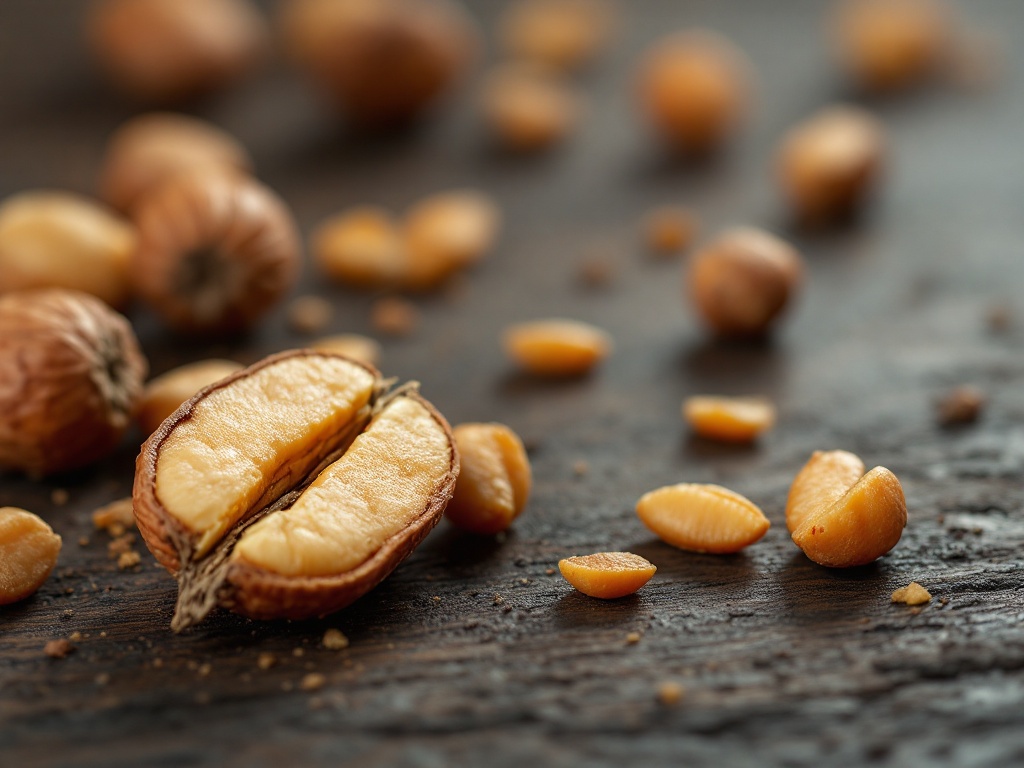The ketogenic (or keto) diet has gained immense popularity in recent years for its potential benefits in weight loss, mental clarity, and improved energy levels. However, like any diet, it comes with its challenges—particularly for individuals with dietary restrictions or allergies. One common concern for people with nut allergies is whether they can successfully follow a keto diet. Nuts are frequently touted as keto staples, given their low carbohydrate and high fat content, making this a valid question. The good news is, yes, you can absolutely do keto with a nut allergy! It just requires some planning, substitutions, and creativity.
This article dives into how nut allergies intersect with the keto diet, provides practical tips for avoiding nuts while staying keto-friendly, and offers a list of alternative foods and recipes to keep you on track.
Understanding Keto and Its Nutritional Requirements
The ketogenic diet focuses on drastically reducing carbohydrate intake while increasing fat consumption, with moderate amounts of protein. The typical macronutrient breakdown for keto is:
- 70–80% fats
- 10–20% protein
- 5–10% carbohydrates
By limiting carbs, the body enters a state of ketosis, where it burns fat for energy instead of glucose. High-fat foods, such as oils, fatty meats, avocados, and nuts, are mainstays in many keto meal plans.
For people with nut allergies, however, the inclusion of nuts is off the table. Since nuts like almonds, pecans, and macadamia nuts are often promoted as keto-friendly snacks or ingredients, it can feel limiting. But rest assured, the ketogenic diet is flexible enough to accommodate nut-free options.
Common Challenges with a Nut-Free Keto Diet
1. Finding Snack Alternatives
Nuts are often the go-to snack for keto dieters because they’re portable, filling, and high in healthy fats. Without nuts, you’ll need to identify other quick, on-the-go snack options that meet your dietary requirements.
2. Replacing Nut-Based Flours
Many keto recipes use almond flour or other nut-based flours as low-carb baking substitutes. If you’re allergic to nuts, finding a suitable alternative for baked goods or bread-like textures can be challenging.
3. Meeting Fat Macros
Since nuts are a rich source of fat, avoiding them means you’ll need to incorporate other fat-dense foods to ensure you’re meeting your macronutrient goals.
4. Avoiding Cross-Contamination
If your nut allergy is severe, cross-contamination can be a concern with prepackaged keto products. Many nut-free items may still be processed in facilities that handle nuts, so it’s important to read labels carefully.
Nut-Free Keto-Friendly Foods
To successfully follow a keto diet with a nut allergy, focus on incorporating a variety of nutrient-dense, low-carb, and high-fat foods. Here’s a breakdown of some excellent options:
1. Seeds
While nuts are off-limits, seeds can provide similar benefits. They’re high in fats, low in carbs, and pack a punch of fiber and nutrients.
- Chia seeds: Great for puddings or adding to smoothies.
- Flaxseeds: Ideal for keto baking or as an egg substitute.
- Sunflower seeds: Perfect for snacking or making sunflower seed butter.
- Pumpkin seeds: High in magnesium and a great snack option.
2. Dairy Products
Full-fat dairy is a staple in many keto diets and can help you meet your fat macro goals.
- Heavy cream
- Cream cheese
- Full-fat yogurt (unsweetened)
- Butter
- Cheese (e.g., cheddar, mozzarella, brie, gouda)
3. Meats and Seafood
Animal proteins are naturally low in carbs and rich in fats, making them ideal for keto. Focus on fatty cuts and oily fish to increase your fat intake.
- Fatty cuts of beef (e.g., ribeye, ground beef)
- Pork (e.g., bacon, pork belly)
- Chicken thighs and drumsticks
- Salmon, mackerel, sardines, and tuna
- Shellfish (e.g., shrimp, crab, lobster)
4. Oils and Fats
High-quality fats are essential for keto. These can replace the fats you might otherwise get from nuts.
- Olive oil
- Avocado oil
- Coconut oil
- Ghee
- Lard
5. Low-Carb Vegetables
While vegetables aren’t a direct replacement for nuts, they add essential vitamins, minerals, and fiber to your diet.
- Leafy greens (e.g., spinach, kale)
- Zucchini
- Cauliflower
- Broccoli
- Cabbage
- Mushrooms
6. Nut-Free Baking Substitutes
For those who enjoy keto-friendly baked goods, nut-free flours are a must.
- Coconut flour: A popular low-carb alternative, but it absorbs a lot of liquid, so recipes often require adjustments.
- Sunflower seed flour: Similar in texture to almond flour and easy to use in keto recipes.
- Flaxseed meal: Adds a nutty flavor without the use of nuts.
Sample Nut-Free Keto Meal Plan
To give you a better idea of what a nut-free keto diet looks like, here’s a simple meal plan:
Breakfast
- Scrambled eggs cooked in butter with sautéed spinach
- Keto chia seed pudding made with coconut milk
Lunch
- Grilled chicken thighs with a side of roasted cauliflower and a drizzle of olive oil
- Mixed greens salad topped with avocado, bacon, and a creamy dressing
Snack
- String cheese or cheese crisps
- A handful of pumpkin seeds
Dinner
- Pan-seared salmon with asparagus cooked in ghee
- Zucchini noodles tossed in a creamy Alfredo sauce
Dessert
- Coconut flour mug cake sweetened with stevia
- Sugar-free chocolate fat bombs
Tips for Staying Nut-Free on Keto
1. Read Labels Carefully
Always check ingredient labels when buying packaged keto products. Many “keto-friendly” snacks or bars contain nuts or nut-based ingredients.
2. Make Your Own Snacks
Homemade snacks are a great way to ensure they’re nut-free. For example, you can make seed-based granola bars, cheese crisps, or coconut flour muffins.
3. Experiment with Recipes
Don’t be afraid to try new recipes that use nut-free substitutes. For example, swap almond flour for sunflower seed flour or coconut flour in your favorite keto baked goods.
4. Plan Ahead
Meal prepping and planning can help you avoid situations where you’re tempted to reach for convenient (but nut-containing) foods.
5. Consult a Dietitian
If you’re unsure how to adjust your keto diet to accommodate a nut allergy, a registered dietitian can help you create a balanced meal plan.
Nut-Free Keto Recipes to Try
Here are a few easy and delicious nut-free keto recipes:
1. Chia Seed Pudding
- Ingredients: 2 tbsp chia seeds, 1/2 cup coconut milk, 1 tsp vanilla extract, sweetener of choice.
- Instructions: Mix all ingredients in a jar, refrigerate overnight, and enjoy.
2. Sunflower Seed Butter Fat Bombs
- Ingredients: 1/2 cup sunflower seed butter, 1/4 cup coconut oil, sweetener to taste.
- Instructions: Combine ingredients, pour into silicone molds, freeze until solid.
3. Coconut Flour Pancakes
- Ingredients: 2 eggs, 2 tbsp coconut flour, 1/4 cup heavy cream, 1/4 tsp baking powder.
- Instructions: Whisk ingredients, cook on a greased skillet, and serve with sugar-free syrup.
Final Thoughts
Having a nut allergy doesn’t mean you can’t enjoy the benefits of a keto diet. With a little creativity and some thoughtful planning, you can create a nut-free keto meal plan that meets your nutritional needs while satisfying your taste buds. Focus on incorporating a variety of seeds, dairy products, meats, and low-carb vegetables, and don’t shy away from experimenting with nut-free substitutes in your recipes.
Remember, the goal of keto is to find what works best for your body and lifestyle. With the right approach, a nut-free keto diet can be just as effective and enjoyable as one that includes nuts. Happy keto-ing!

